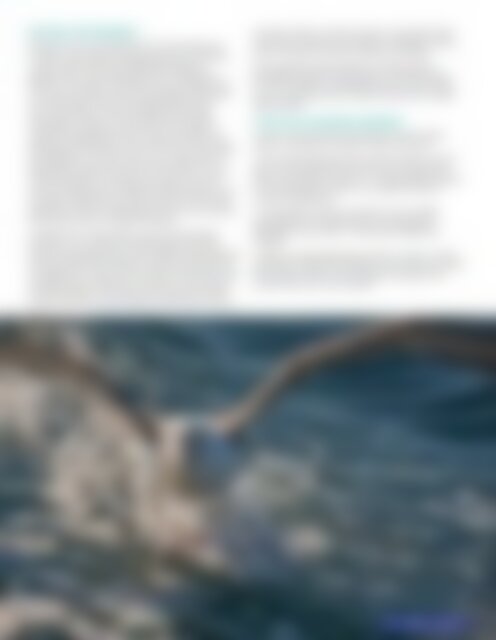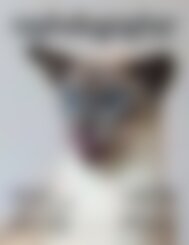NZPhotographer Issue 16, Feb 2019
As of December 2022, NZPhotographer magazine is only available when you purchase an annual or monthly subscription via the NZP website. Find out more: www.nzphotographer.nz
As of December 2022, NZPhotographer magazine is only available when you purchase an annual or monthly subscription via the NZP website. Find out more: www.nzphotographer.nz
You also want an ePaper? Increase the reach of your titles
YUMPU automatically turns print PDFs into web optimized ePapers that Google loves.
BEYOND THE BOULDERS<br />
Moeraki is not only well known for its boulders, but<br />
it’s also a very popular place to go out on a fishing<br />
charter which opens up wildlife photography<br />
opportunities. On a fishing trip with my Dad and<br />
Brother, we caught many Blue Cods and Red Cods<br />
and I also had the chance to photograph Albatross<br />
at close range as they were following our boat<br />
for an easy feed. It was incredible to see these<br />
huge birds so close. As we moved from location<br />
to location searching for fish they would follow us,<br />
gliding so effortlessly as they soared that their wings<br />
would gently touch the wave. It is a known fact that<br />
the Albatross can fly for many many miles without<br />
flapping its wings, the only known bird to do so, but<br />
it was a pleasure to witness it up close. The coast<br />
from the water looks so different looking back in and<br />
sometimes dolphins are in the area so it’s well worth<br />
grabbing a boat and heading out with your camera,<br />
even if you have no interest in fishing!<br />
At Katiki Point, the southern point of the Moeraki<br />
Peninsula, you will find the endangered and rare<br />
yellow-eyed penguins plus the common New Zealand<br />
fur seals. These two species live side by side and are<br />
not predator or prey to each other. The location near<br />
the lighthouse is where you can get up and close to<br />
see the penguins, the best time is a few hours after<br />
sunrise and a few hours before sunset when you will<br />
see them enter or exit the ocean. I have been here<br />
a number of times and never left unsatisfied, always<br />
able to capture the birds walking or climbing.<br />
If you pick the seasons right you will also get to<br />
photograph baby seals playing in the pools below,<br />
but don’t forget your telephoto lens as I don’t think<br />
you can get very close to them without the mothers<br />
getting upset.<br />
4 TIPS FOR CAPTURING MOERAKI<br />
• Get to the boulders early before everyone else<br />
does, at sunrise you’ll need to claim your spot.<br />
• For the best seascape shot, get your feet wet and<br />
shoot a long exposure with the water rushing past.<br />
Watch the water to see how it moves before wading<br />
in and pressing the shutter, you might be able to<br />
create a leading line.<br />
• An 80–200mm 2.8 lens is good for most wildlife<br />
photography at Moeraki but for capturing the<br />
albatross on the water, a wider lens will likely be<br />
needed.<br />
• When choosing between sunrise or sunset, I would<br />
personally capture the wildlife in the evening as whilst<br />
the reverse sunsets at the boulders are good, the<br />
sunrises are much much better.<br />
<strong>Feb</strong>ruary <strong>2019</strong><br />
31<br />
F9, 1/800s, ISO125


















